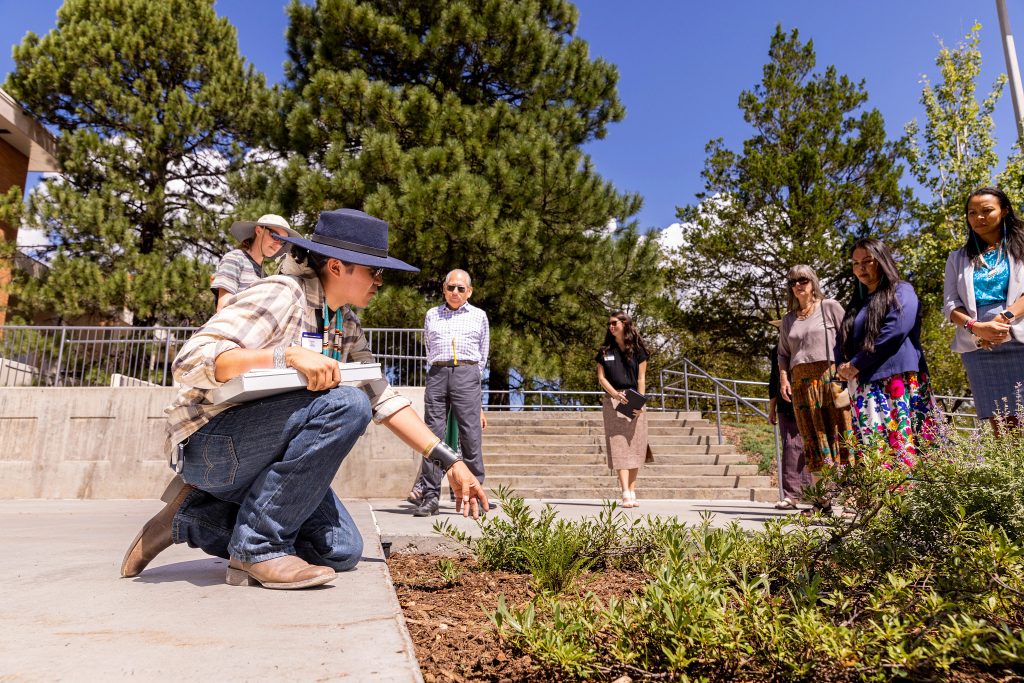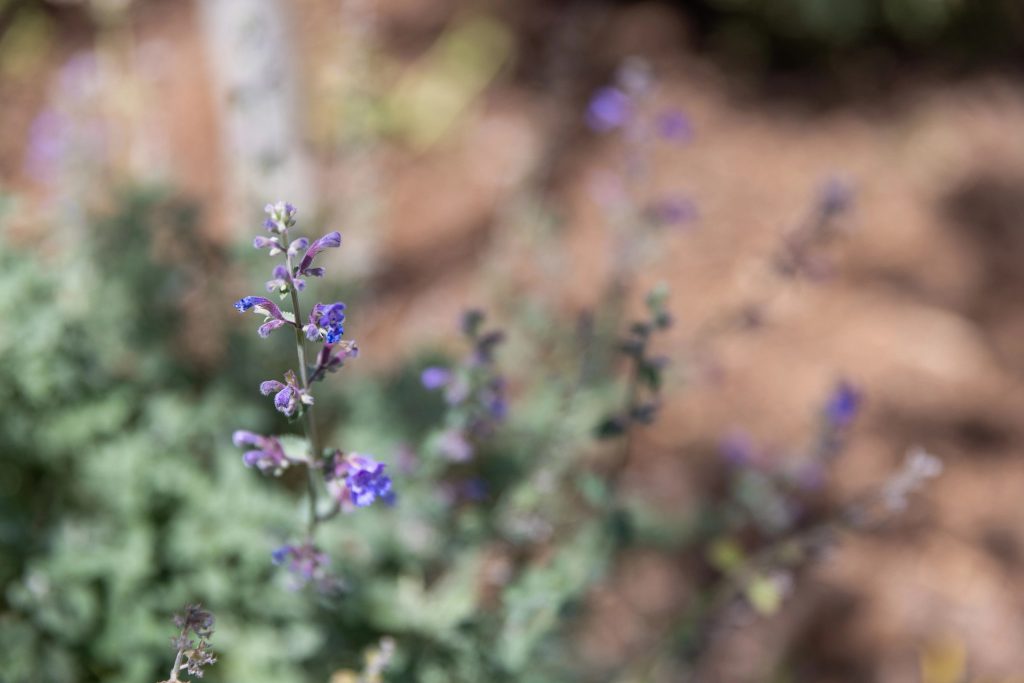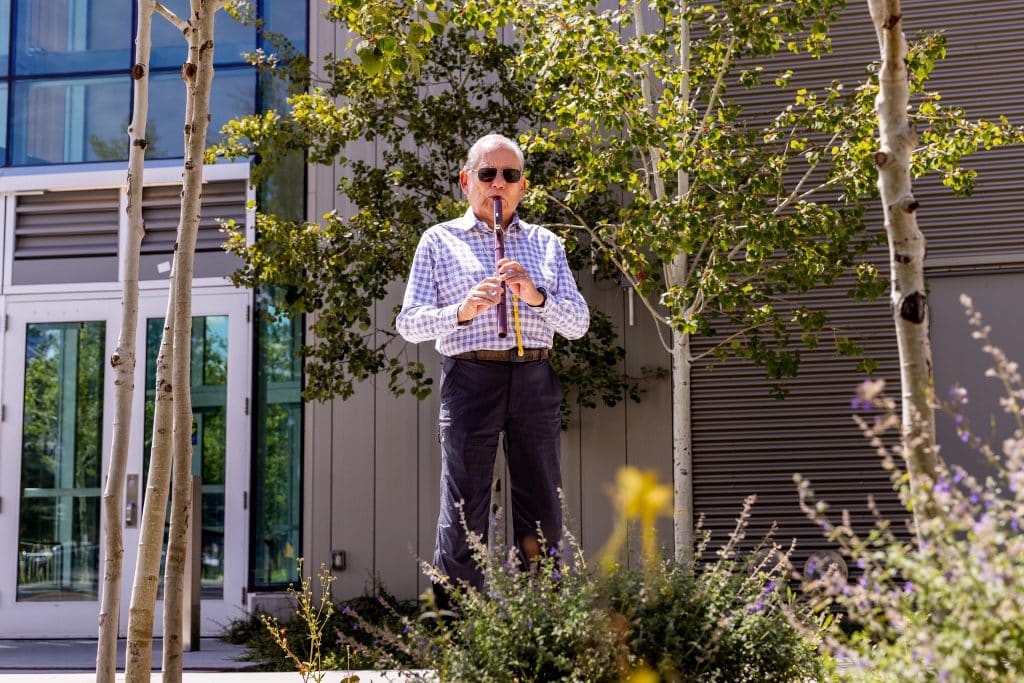What do nature and music have in common? Everything, according to R. Carlos Nakai.
That’s why the Navajo-Ute musician and NAU alumnus recently worked with NAU to give a small campus plaza a new lease on life.

Thanks to a donation from Nakai and his spouse, Pamela Hyde-Nakai, the space between Kitt Recital Hall and the Clifford E. White Theater has now transformed into Nakai Plaza, a relaxing space bursting with native plants. For Nakai, the plaza symbolizes the importance of having spaces on campus that both educate and enhance cultural engagement.
“This area is in the heart of music, and we want to encourage connections to native plants and provide a space for Indigenous people to be at the center of music and nature,” Nakai said. “When we demonstrate our belonging to culture and invite students to join, we create a space that connects us all.”
Often considered the premier Native American flutist alive today, Nakai is best known for his album “Canyon Trilogy,” which was certified platinum in 2014. Over the course of a 40-year career, Nakai has released upwards of 50 albums, which have together sold more than 4.3 million copies. He has been nominated for a Grammy 11 times across four categories. He earned a degree from NAU in 1979 and received an honorary doctorate in 1994.

As a musician and lecturer, Nakai advocates preserving and sharing cultural traditions through his music. Nakai’s inclination toward education became deeply embedded in his approach to music, sharing his cultural traditions with artists and industry experts worldwide.
In the spirit of sharing precious cultural traditions, Nakai and Hyde-Nakai worked with local master gardener Laura Davis, long-time friend Phyllis Hogan and NAU Greenhouse manager Adair Patterson to hand-select Indigenous plants grown at the Museum of Northern Arizona to beautify the central campus space on S. Knoles Drive.
At a recent dedication ceremony with Nakai, Hyde-Nakai and staff from NAU, forestry and fire ecology student Sahale James blessed the space and shared knowledge about each plant species, from golden columbine to blue catmint.
“As a Navajo student and a student of forestry, researching helped me feel more connected with the plants themselves, learning their medicinal purposes both from the Western side and for my cultural and traditional use,” James said. “I took the initiative to advocate for myself and extend a hand to teach what I know to other Native American students.”
Jill Kimball | NAU Communications
(928) 523-2282 | jill.kimball@nau.edu




